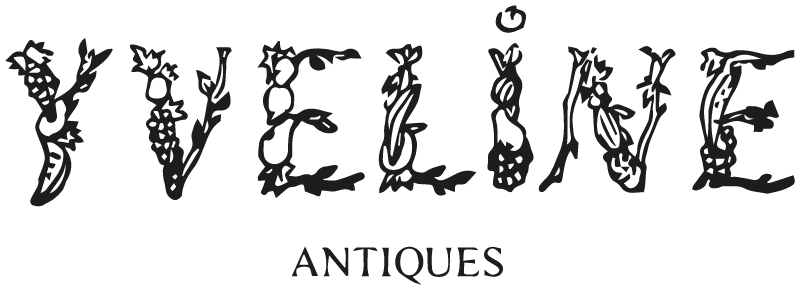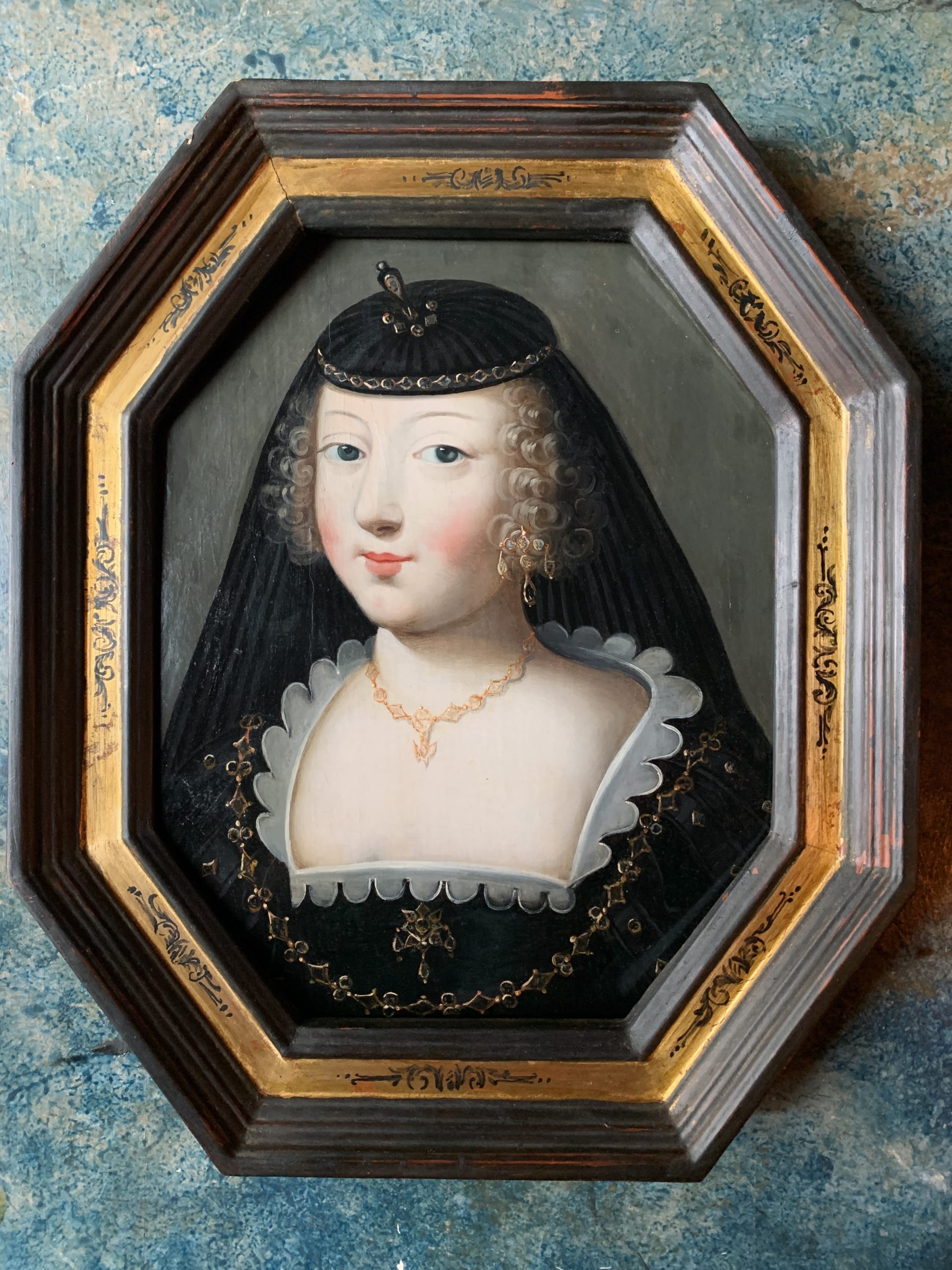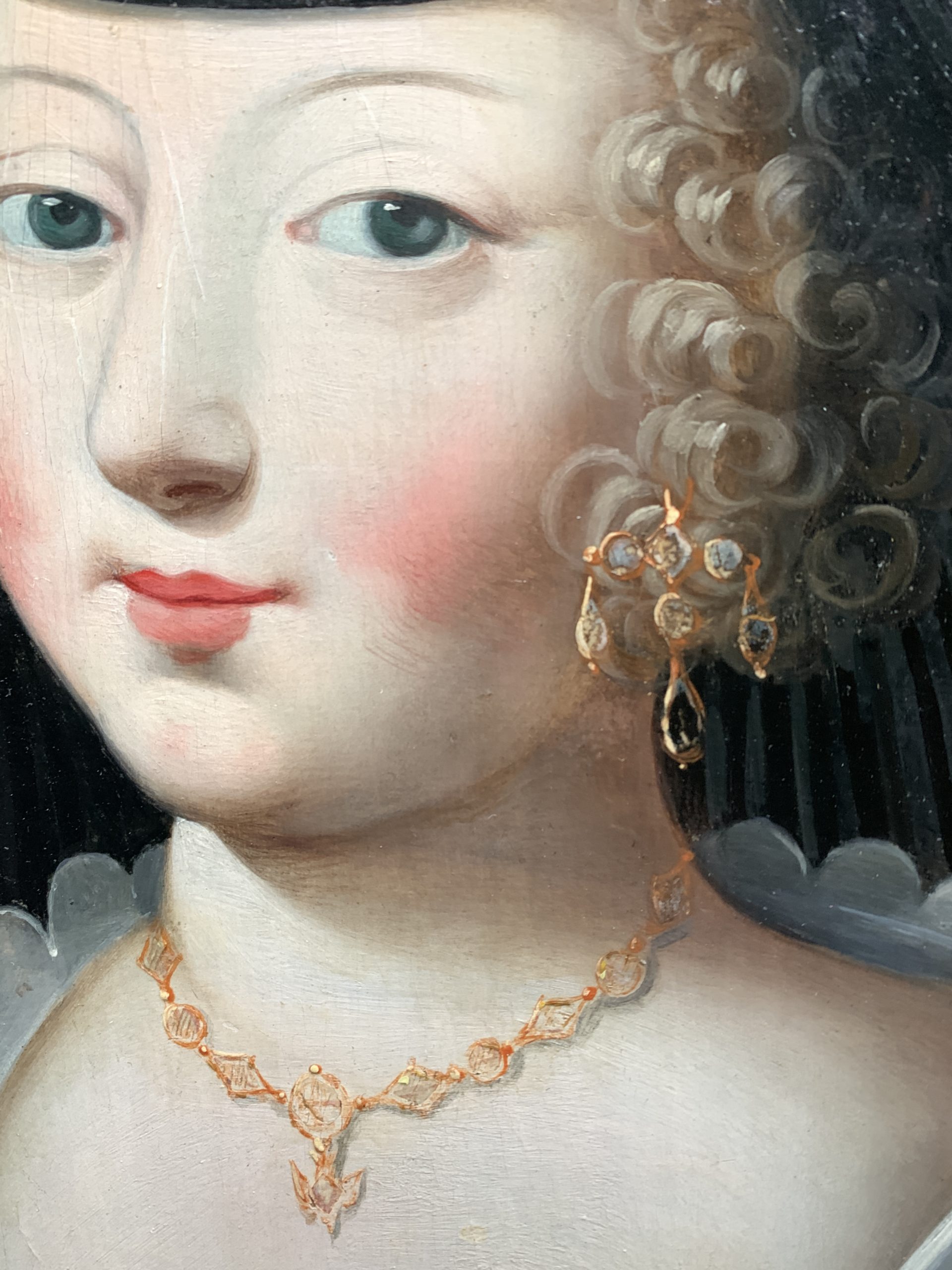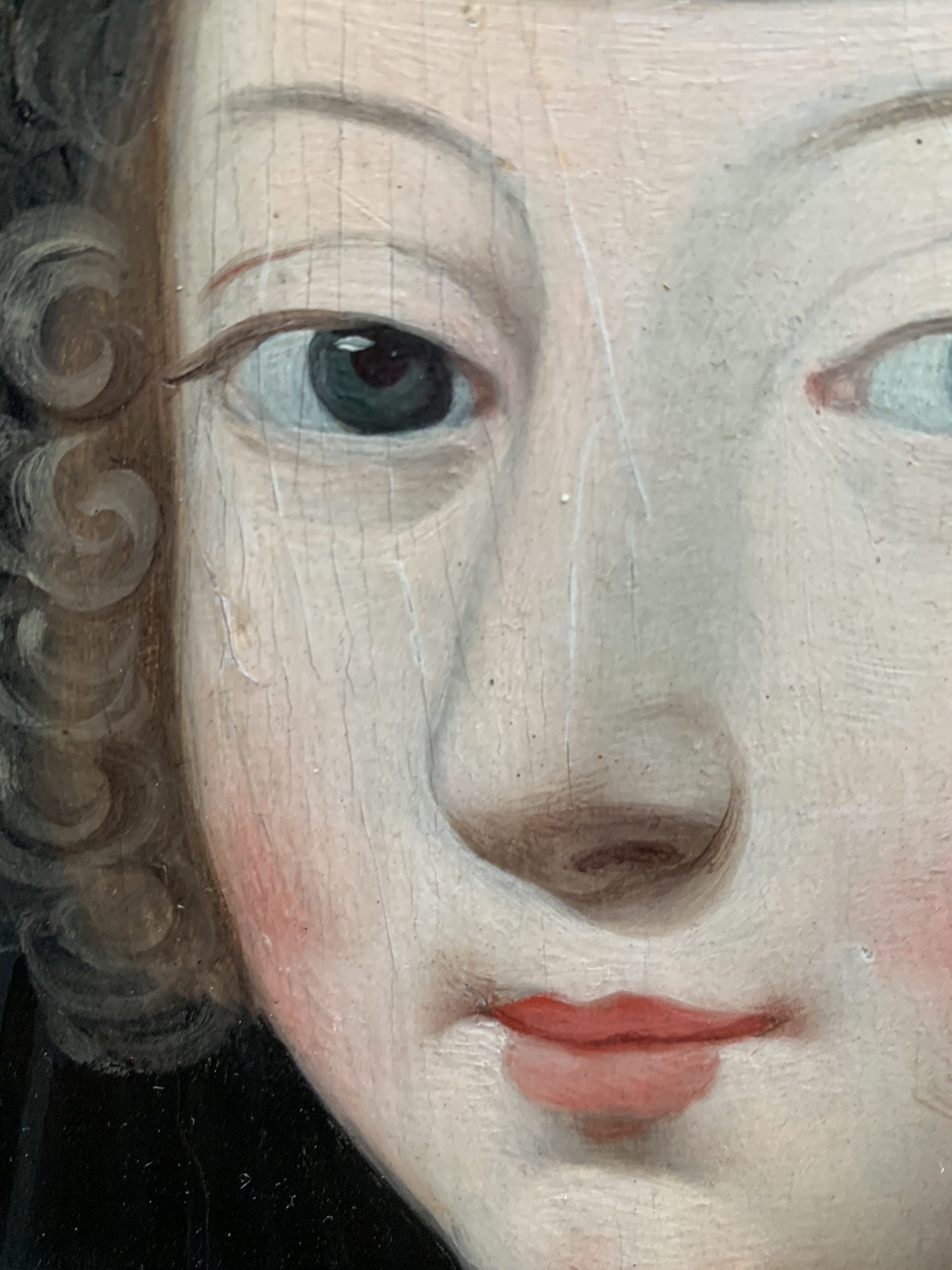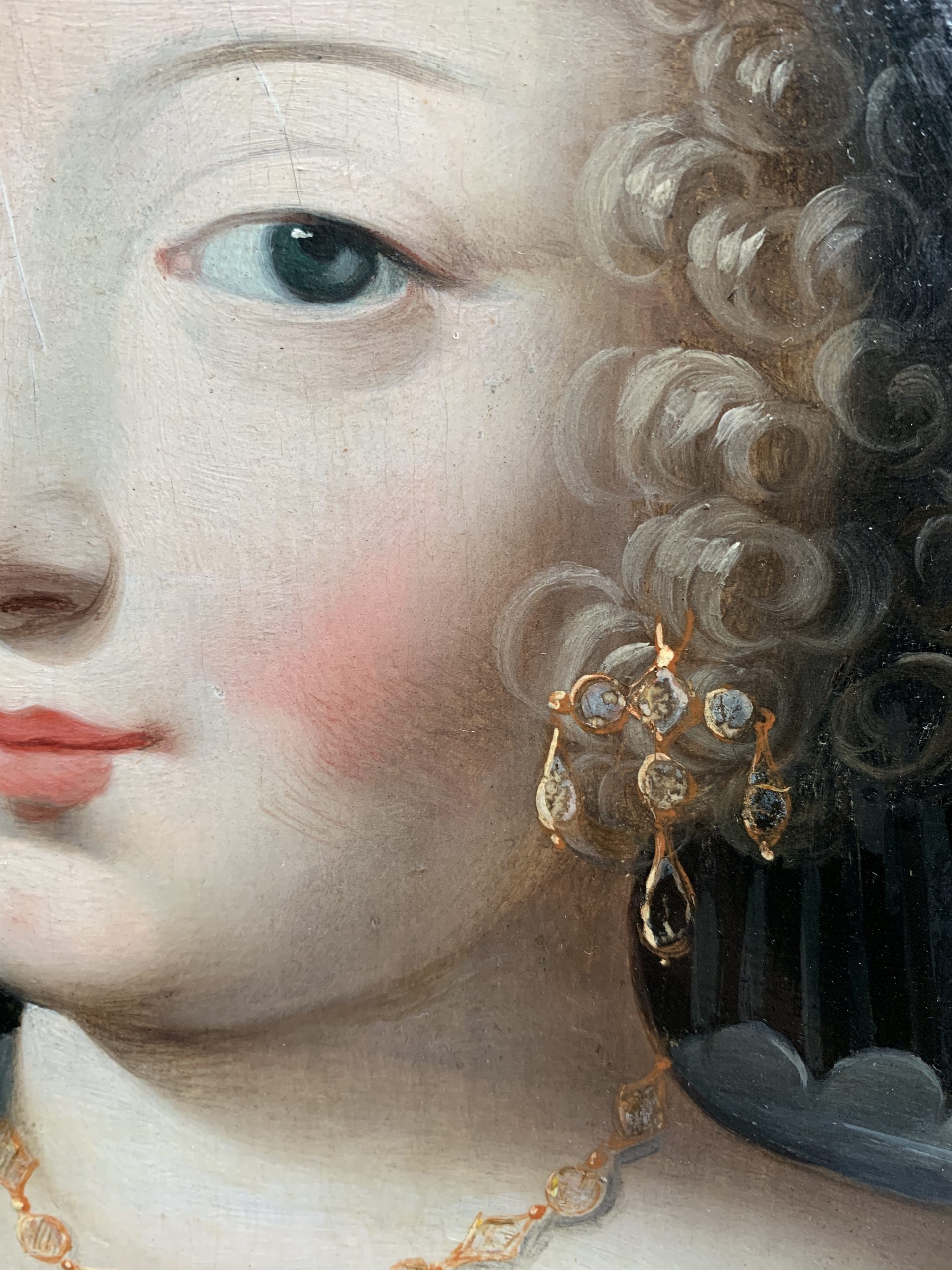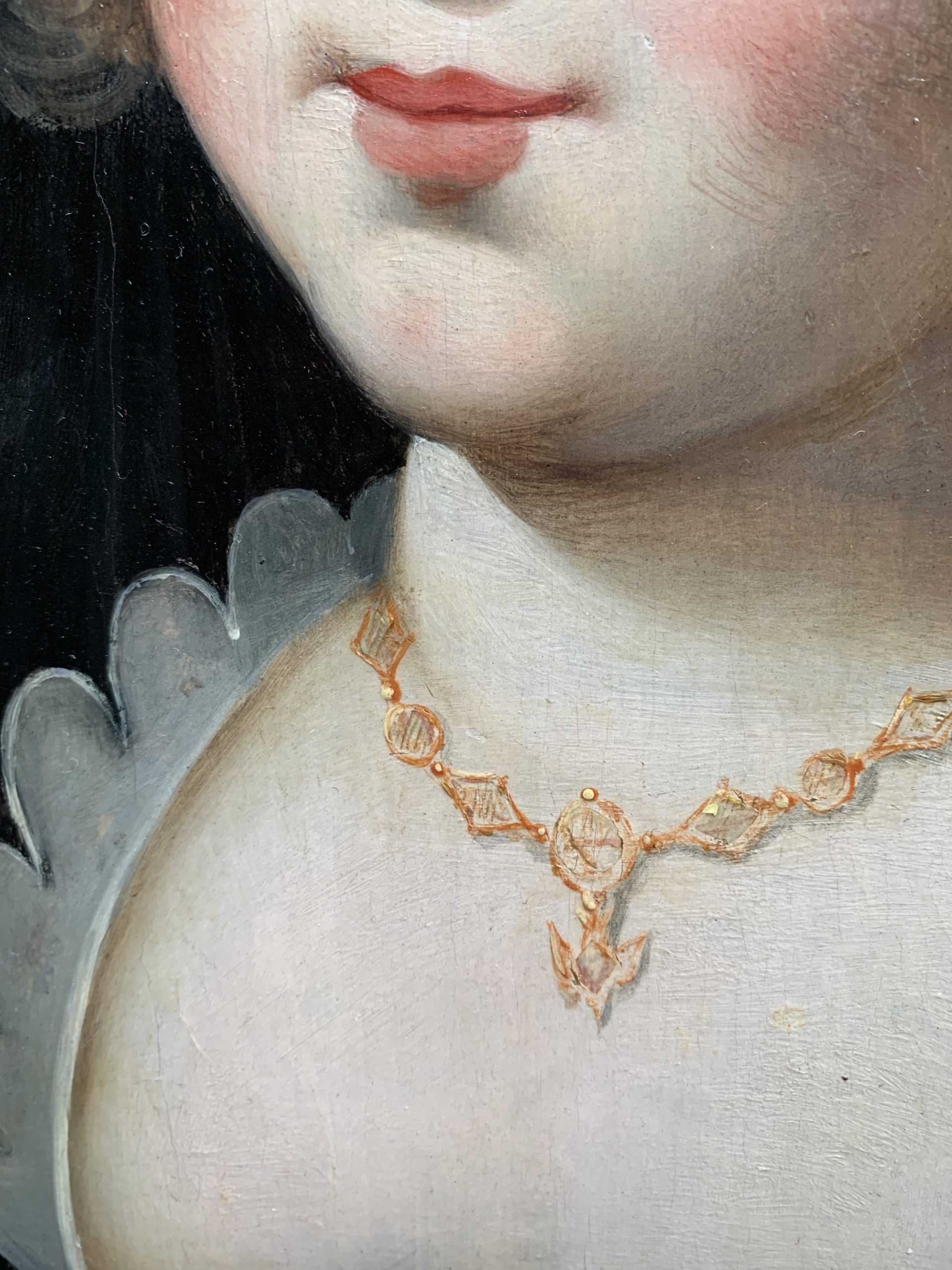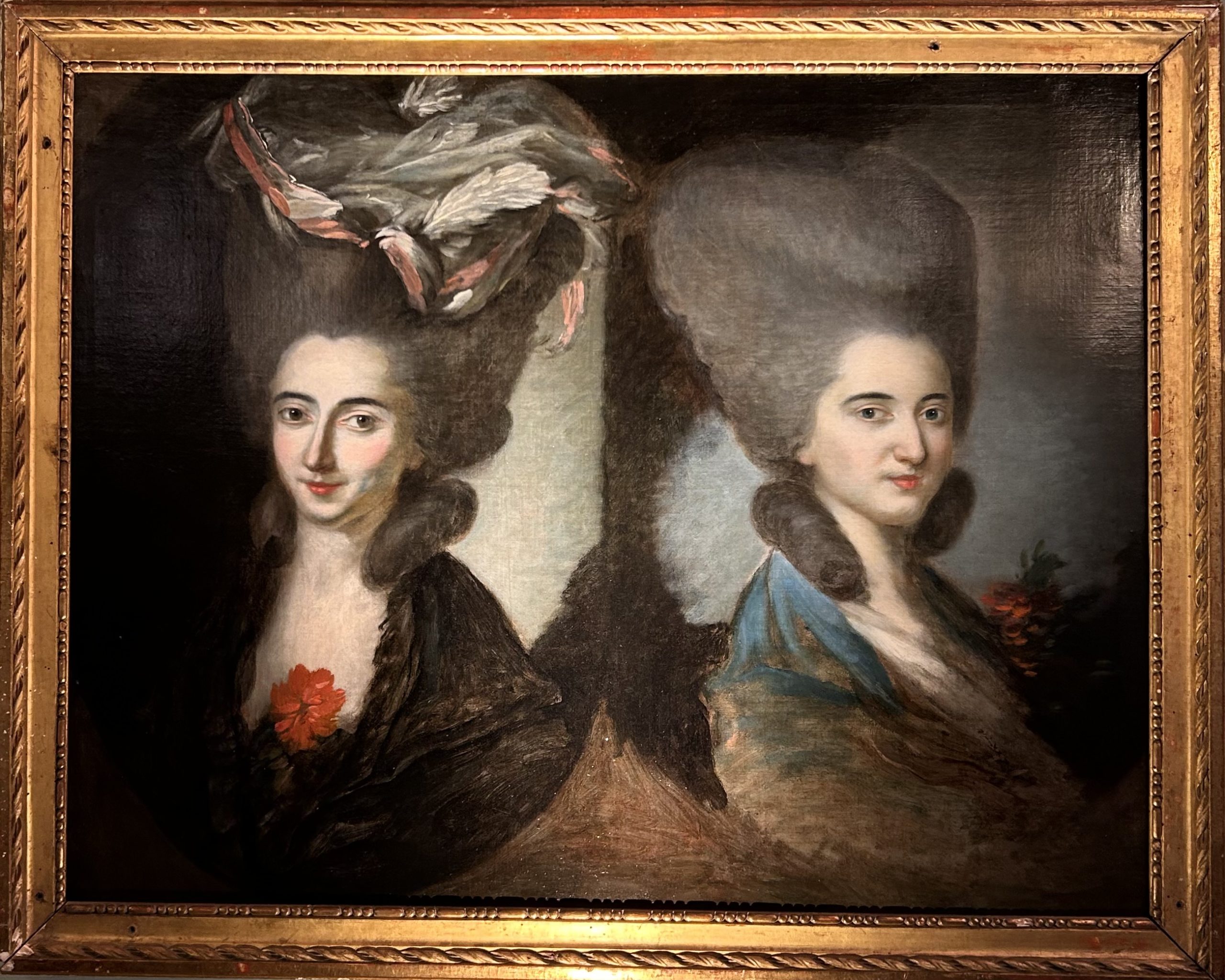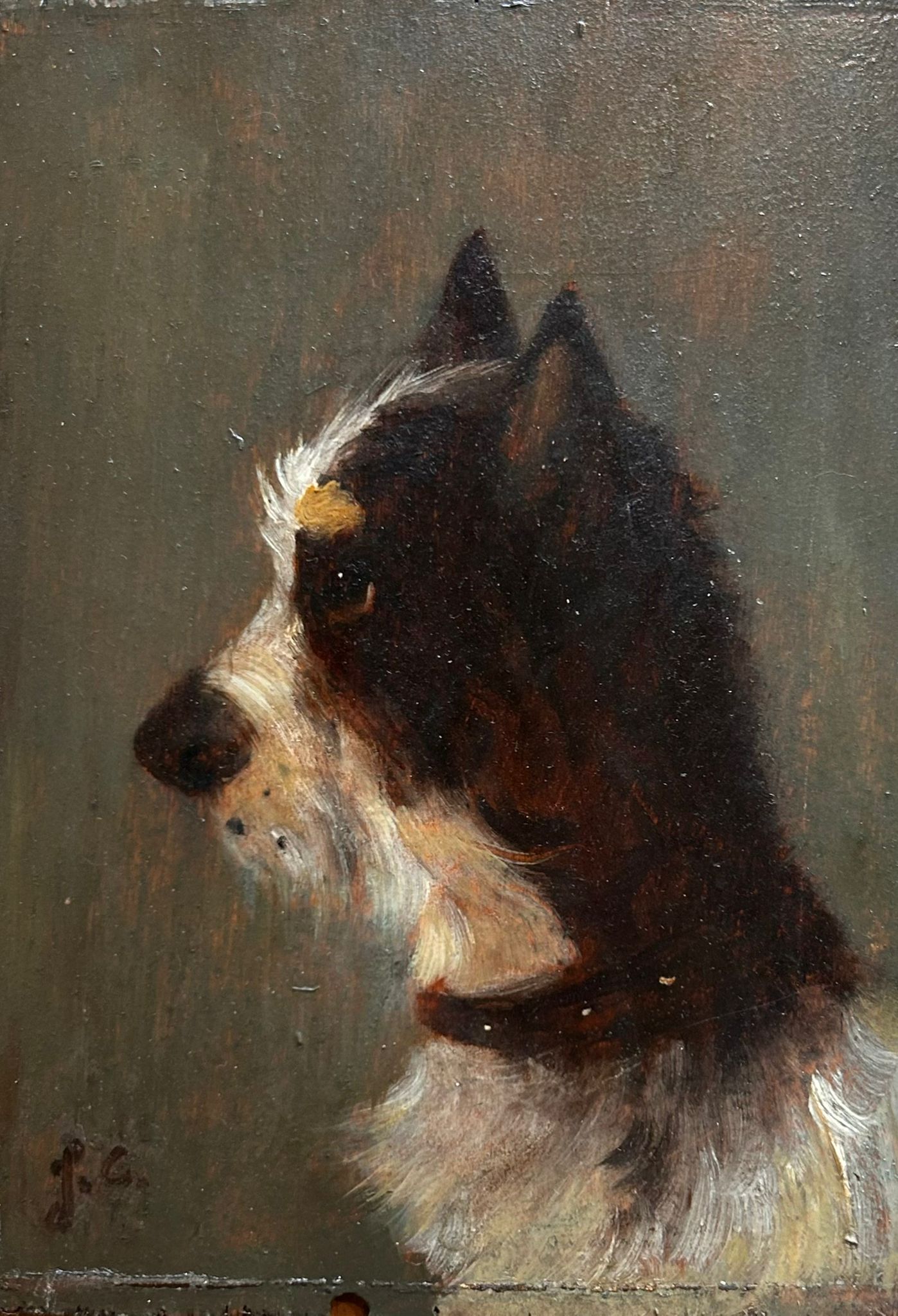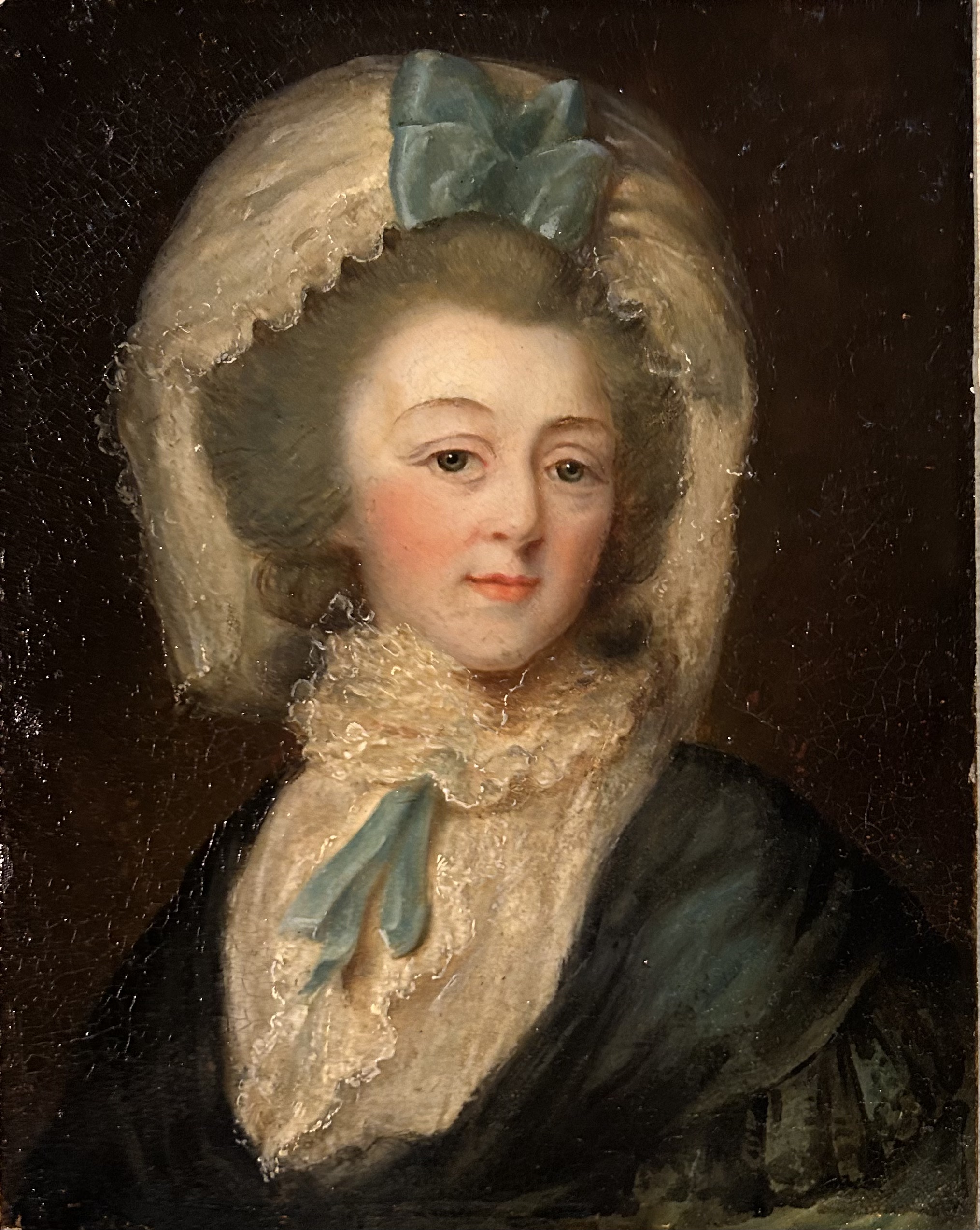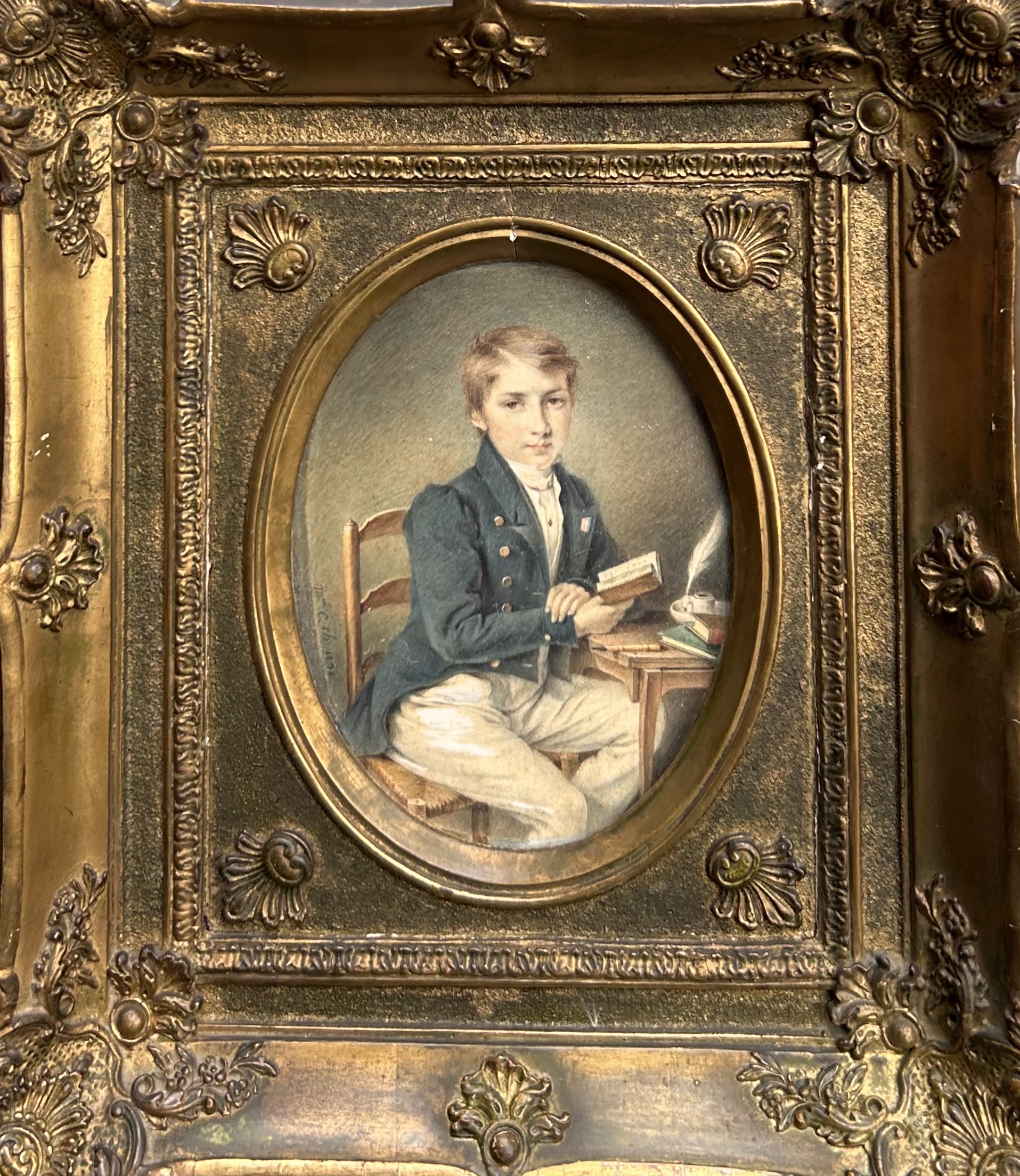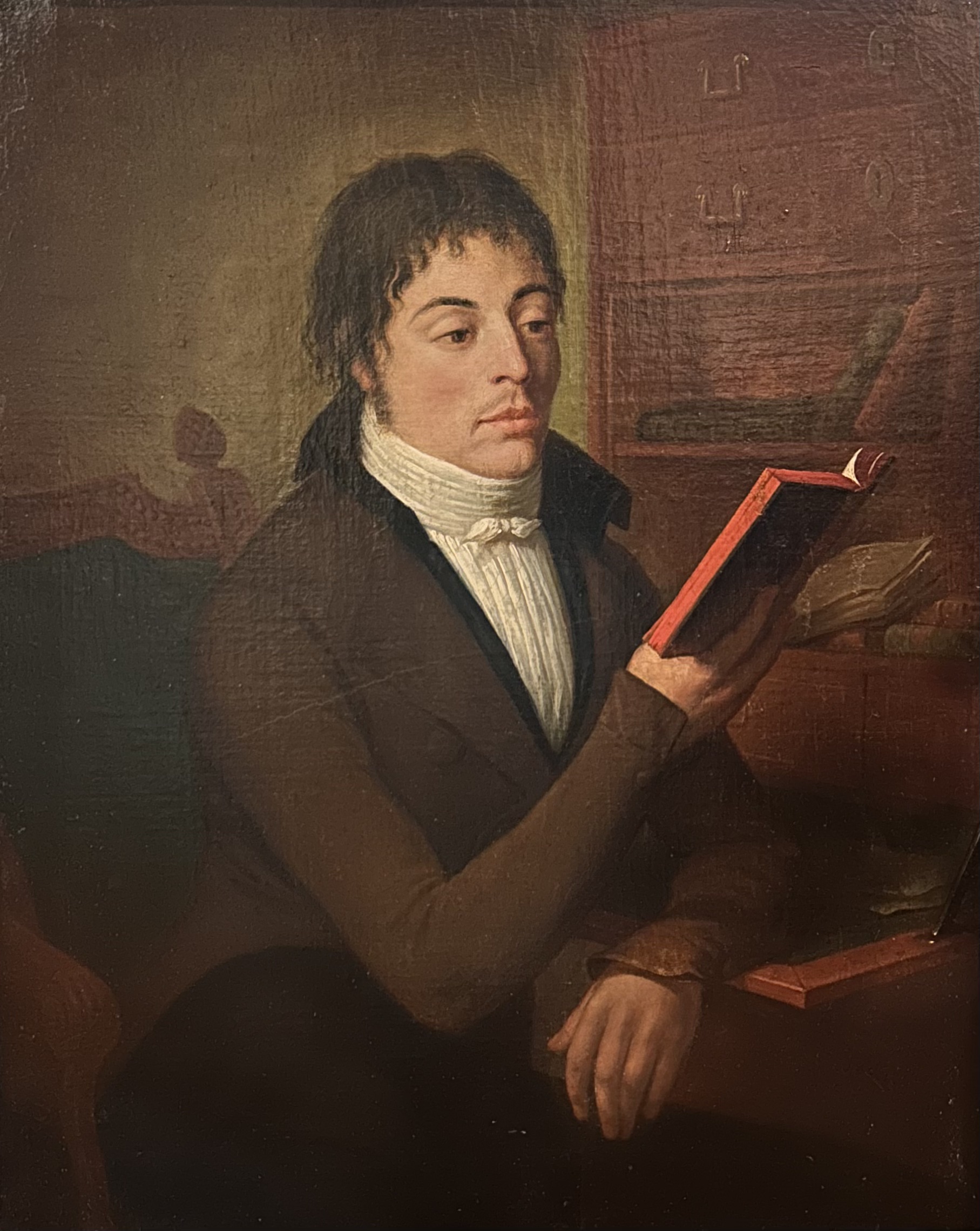Portrait of Princess Anne-Géneviève de Bourbon, duchess of Longueville (1619-1679), daughter of the Prince of Condé and Charlotte de Montmorency. Oil on octagonal panel by Jean Ducayer, painted after a work by François Clouet.
Anne-Geneviève de Bourbon was the only daughter of Henri II de Bourbon, Prince of Condé, and his wife Charlotte-Marguerite de Montmorency, and the sister of the Grand Condé and the Prince of Conti. She played an important role among the Frondeurs during the minority of Louis XIV.
In 1642, Anne-Geneviève married Henri II d’Orléans, Duke of Longueville, governor of Normandy for twenty-three years. The Duke represented a better match due to his Capetian ancestry (he descended in the direct male line from Jean d’Orléans, Count of Dunois and Longueville, the legitimized natural son of Louis I d’Orléans and grandson of King Charles V).
After the deaths of Richelieu and Louis XIII, Anne-Geneviève’s father, the Prince of Condé, became head of the Regency Council during the minority of Louis XIV. Her elder brother Louis won the Battle of Rocroi in 1643, a decisive turning point in the final years of the Thirty Years’ War. The Duchess then became an important political interlocutor. In July 1646, she joined her husband in Munster, where he had been sent the previous year by Mazarin as a negotiator to end the Thirty Years’ War. Anne Geneviève charmed diplomats of all nationalities negotiating the Treaty of Westphalia and was celebrated as the “goddess of Peace and Concord.”
Anne-Geneviève de Bourbon lived in a troubled time of the Fronde. An episode taking place during the minority of Louis XIV with the queen mother and her minister Mazarin ensuring power, between 1643 and 1661. France, at war with Spain, was experiencing an economic crisis, the great lords of the kingdom rebelled. In this atmosphere, Anne pushed her husband and her brother (the famous Grand Condé) to side with the rebellious parliamentarians in 1648. During this period she moved into the Hôtel de Ville where she gave birth to a son, Charles-Paris, whose paternity is unofficially attributed to La Rochefoucauld, the famous French writer and memoirist.
Around 1640
Height: 42 cm
Width: 35 cm
